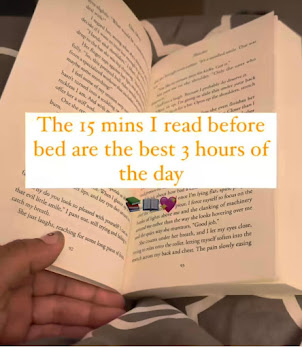-- AJ Fikery, in The Storied Life of AJ Fickery
I just spent a couple of harrowing
weeks in Venezuela. I was shadowing two military criminal investigators
searching for an ex-Delta Force captain who was doing his best to stay hidden.
Before that I cooked with a chemist. And over the last year I’ve traveled
through time, been invisible, defied death, and marched with a female Russian
sniper. I’ve exchanged backhands with an aging tennis star trying to regain her
past glory. I’ve visited midnight libraries and circuses.
Pretty exciting stuff
for a 50-something third-grade teacher. I spend the day encouraging readers, and I also spend most nights embarked upon grand adventures. The kind you
only find in books. The kind only a lover of books can take.
Being a book lover
grants me membership in a secret society. We don’t have a special handshake or
organized meetings. But when we meet an instant convention ensues. The agenda is
the same and features one simple question: “Have you read anything good lately?”
We are the fans of fiction.
We talk about books, we suggest books, and we
occasionally buy each other books. Many of my teaching colleagues are members.
Beautiful Karla is in the club, as are several of the wives of my best friends.
Sadly, my dad and I are the only men in the club. The data out there says that
women read more books than men do, and when it comes to fiction, women again are
more bookish. Studies also reveal that men resist reading books by female
authors. What a shame! My inner Harper Lee is weeping.
Men may have closed the
book on fiction by choosing to live in a strictly non-fiction world. And I
agree, the non-fiction aisles of the bookstore are great places to visit. Give
me some history, a biography, a sports story, or a Christian living soul-shaper
and I’m all in. But it’s fiction that really pulses through the pages of my
heart. Ninety percent of what I read is fiction. And we readers, fiction or non,
are a dying breed.
That’s because a third of teens aren’t reading for fun
anymore. According to a recent survey, 31 percent of 13-year-olds said they
never read for pleasure, 22 percent read once or twice a week, and only 14
percent read for fun every day. The stats are a complete flip from 40 years ago
when only eight percent didn’t read for enjoyment. It doesn’t take a genius to
see the negative effects of smart phones and social media when it comes to
reading. Just check the grade books. Math and reading scores on the nation’s
report card have fallen to their lowest levels in decades, even lower than
2020’s pandemic scores. The good news is that kids who read in their spare time
scored higher on average.
There are several other benefits to cracking open some
fiction. According to psychologists, reading fiction improves your theory of
mind. Basically, theory of mind is when you use a host of input to figure out
what another person is feeling or thinking based on what they’re not telling
you. It’s reading people, like when you look past a used-car salesman’s smile to
see his sack of lies. And by reading fiction you’re not only activating the part
of your brain responsible for theory of mind, but you’re strengthening it too.
Secondly, reading fiction makes you more empathetic. And lastly, reading fiction
increases creativity.
Reading fiction must be the reason for my heightened
creative, empathetic people-reading skills, but personally I enjoy fiction
because I love marveling at what someone has accomplished. We all love to
experience uber-talented people doing what they do best. It’s why we love the
Olympics, concerts, sports, and movies. People making really hard things look
easy leaves us in awe and often left wondering how did they do that? And since
we’re not gymnasts, musicians, quarterbacks, or actors our level of marveling is
heightened from our lack of experience in those disciplines.
For me, it’s the
same with authors. I can’t soar through the air like Simone Biles, but writing
is a little closer to my wheelhouse. I often describe creating these blogs as
putting a puzzle together in which I also have to create the individual puzzle
pieces. Two pages and 900 words is doable. But 400 pages and 90,000 words?
That’s a lot of puzzle pieces. And when an author combines world-class writing
with an original, creative story, I’m in awe. They’re the ones who cause me to
read a sentence that’s so good I have to close the book and stare at the wall.
They’re the authors who move me to highlight sentences or entire paragraphs.
They’re the creators of page-turners. The books for which I forsake all other
obligations because I can’t put them down. The books that live on after I’m
finished, that leave me a little sad that I’m done. They’re the ones that I’ll
recommend to others.
October is National Book Month. So, get out there and grab
a book. Go on a new adventure. Re-read an old favorite. Visit the local library,
support an indie bookstore, or download an audiobook for the commute.
And let me
know what your favorite book is. My secret society is always accepting new
members.





